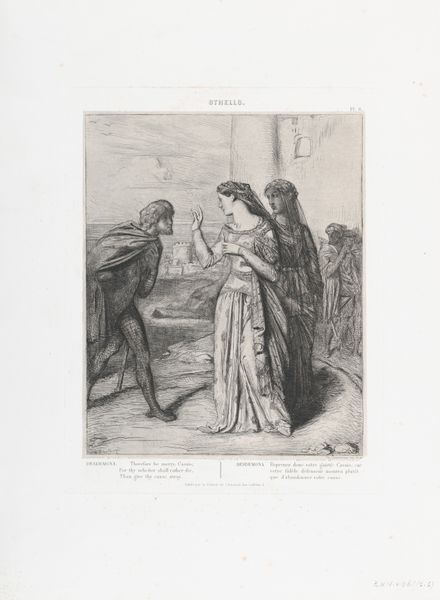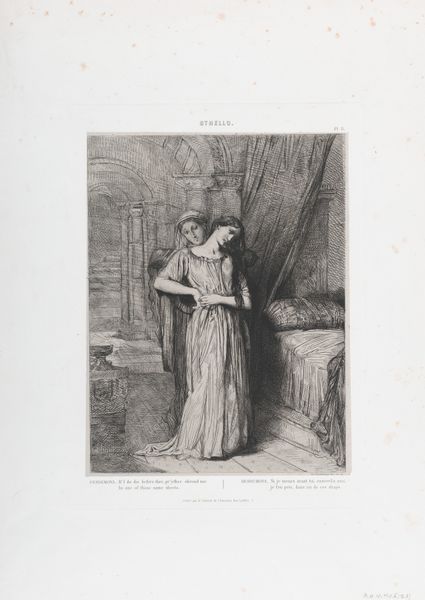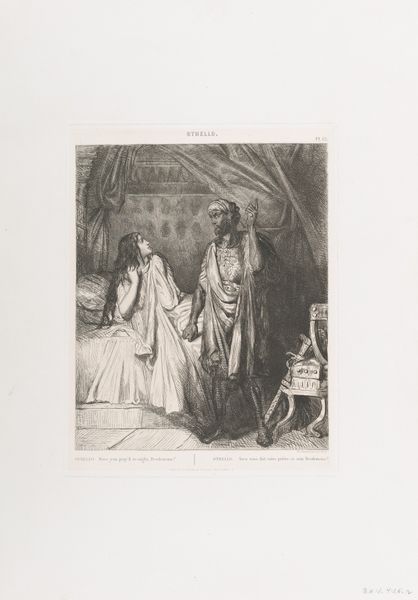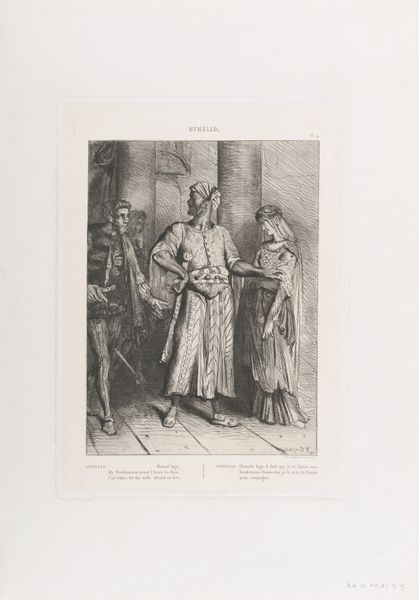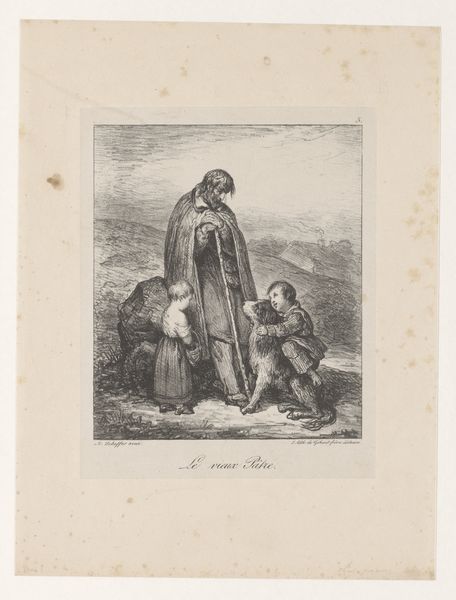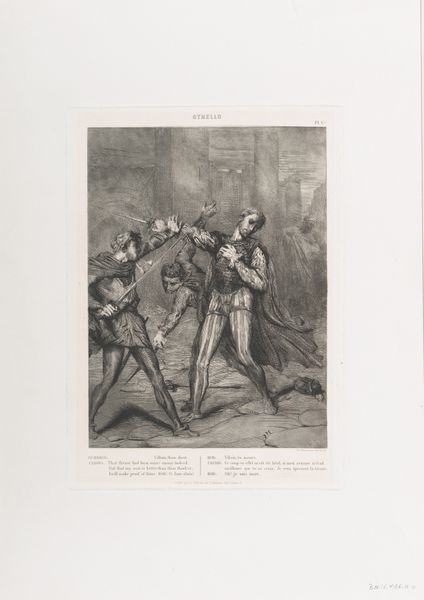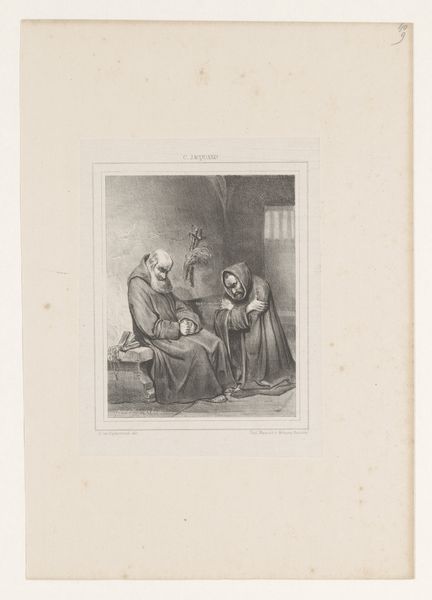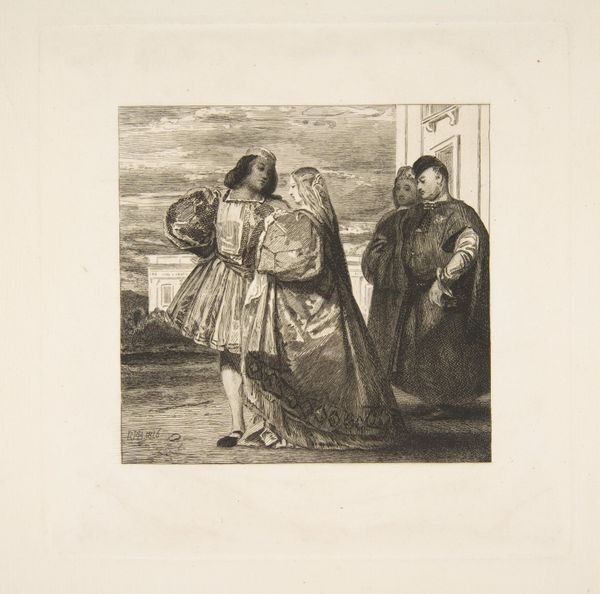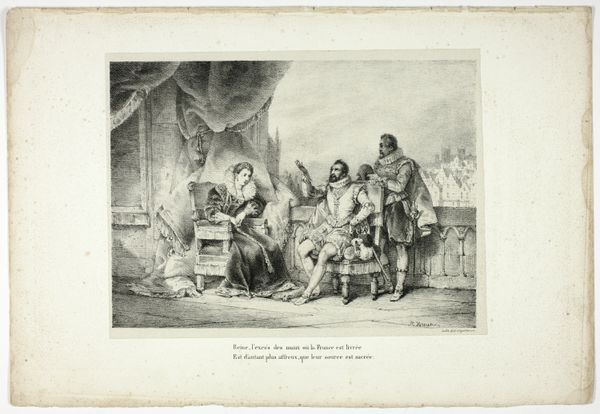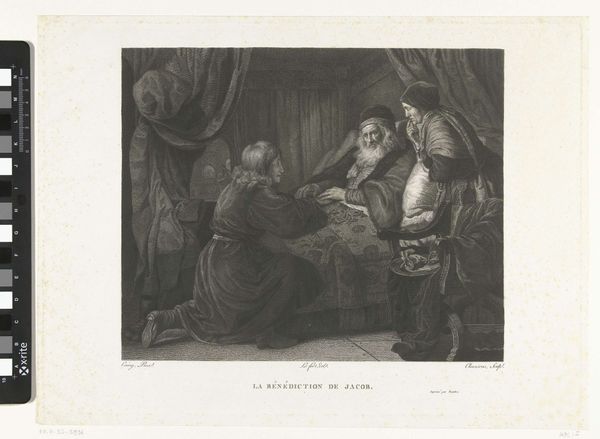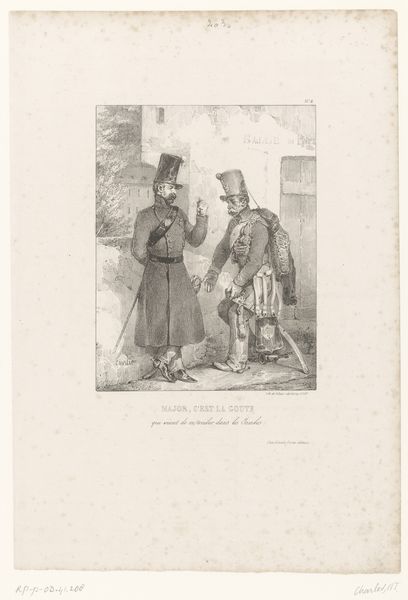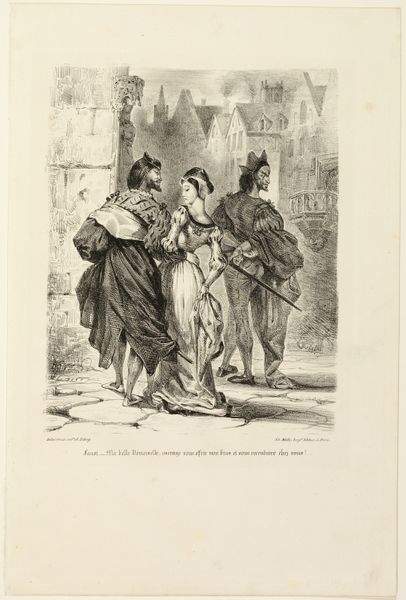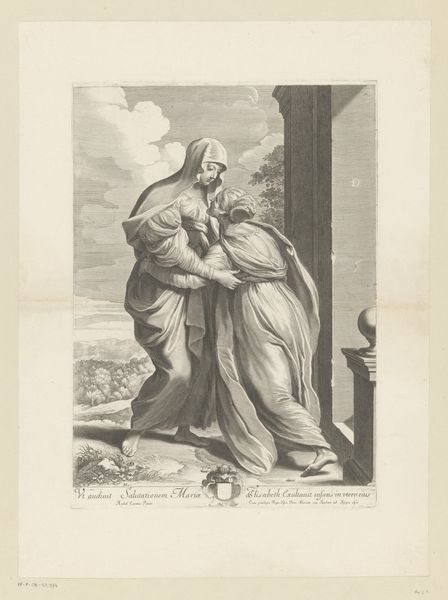
"She thank'd me": plate 2 from Othello (Act 1, Scene 3) 1844
0:00
0:00
drawing, print, etching, engraving
#
pencil drawn
#
drawing
# print
#
etching
#
pencil sketch
#
charcoal drawing
#
figuration
#
pencil drawing
#
romanticism
#
men
#
pencil work
#
history-painting
#
engraving
Dimensions: plate: 14 7/16 x 10 3/8 in. (36.6 x 26.3 cm) image: 11 x 8 5/16 in. (28 x 21.1 cm)
Copyright: Public Domain
This print, "She thank'd me" from Othello, was created by Théodore Chassériau. It's made with etching, a printmaking process that relies on acid to bite into a metal plate, leaving behind lines that will hold ink. Looking at the image, you can see how the etched lines define every detail, from the folds of Othello's robes to the delicate features of Desdemona. The quality of the etched line is crucial here. It can be thick or thin, dark or light, depending on how long the plate was exposed to the acid. This allows the artist to create a full range of tones and textures, building up a complex image from simple linear marks. Etching emerged as a printmaking technique in the 16th century, as artists explored ways to reproduce their images and reach a wider audience, and has been closely linked to commercial publishing ever since. Understanding the labor and skill that goes into making an etching plate helps us appreciate the artistry involved in bringing Shakespeare's play to a visual form. The material and the making process are key to understanding its cultural significance.
Comments
No comments
Be the first to comment and join the conversation on the ultimate creative platform.
